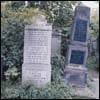The custom of visiting the graves of the righteous—particularly in times of hardship—is deeply embedded in Jewish tradition, dating back to our earliest ancestors.
Early Incidents of Praying at the Tombs of the Righteous
The Midrash1 relates that when Joseph was sold by his brothers and taken to Egypt, the caravan passed the grave of his mother, Rachel. Joseph broke away, weeping bitterly as he cried out to his mother: “Awaken and see your son, sold as a slave, torn from his father, with no one to show mercy! Plead before G‑d on my behalf!”
Overcome with grief, Joseph collapsed on the grave. Then, he heard a voice from beneath the earth: “My son, Joseph, I have heard your cries and seen your tears. Your suffering pains me deeply. But trust in G‑d—He is with you and will save you. Go to Egypt and do not fear.”
Indeed, it was no accident that Rachel was buried at the side of the road instead of in the Cave of Machpelah with the rest of the Patriarchs and Matriarchs.
Commenting on the verse, “And Jacob set up a monument over her grave,”2 the Midrash3 explains that, by Divine command, Jacob buried Rachel along the roadside because when the Temple would be destroyed and the people taken into exile, they would pass by, giving them the opportunity to stop and pray at her grave. Rachel would then rise up and intercede on their behalf. Indeed, Jeremiah later documents: “A voice is heard On High … Rachel weeps for her children.”4
The commentaries point out that the reason Jacob marked the site was so that future generations would know where to go to pray.5
Pleading at the grave of a righteous ancestor was also practiced by Caleb, one of the two spies who didn’t return from Canaan with a negative report.
“They went up in the south, and he came to Hebron,”6 the Torah states. The Talmud notes the shift to singular tense, and explains that Caleb separated from the other Spies and went to pray at the graves of the Patriarchs and Matriarchs that he not succumb to the devious plot of the other Spies.7
During the Tabernacle and Temple Times
Much like the central role of the synagogue in Jewish prayer only fully emerged after the destruction of the Temple (even though the concept of synagogues existed in some form since the time of Moses8), we see a rise in references to visiting and praying at the graves of the righteous after the destruction of the Temple.
In fact, the Midrash relates that right after the destruction of the Temple, the prophet Jeremiah went to pray at the graves of the Patriarchs.9
Marking the Graves of the Righteous
The Talmud tells us that Reish Lakish would mark the graves of rabbis.10 Although Rashi explains that this was done to prevent Kohanim from becoming ritually impure by inadvertently walking over them, others explain that the primary purpose was to ensure these burial sites could be recognized and visited for prayer. A key proof for this interpretation lies in the precise wording of the Talmud. It doesn’t say “graves,” but “graves of the rabbis”—implying that the goal was not just to avoid impurity, but to highlight these specific graves as spiritual landmarks, places where the merit of the righteous could be invoked through prayer.
Visiting and praying at the graves of the righteous is of great importance, explains Rabbi Ishtori HaParchi (1280–1355), author of the first Hebrew book on the geography of the Land of Israel.11 In his classic work Kaftor Vaferach, he notes that while Rabbi Benayah (mentioned in the Talmud12) marked graves in general—likely to prevent Kohanim from becoming impure—Reish Lakish specifically marked the graves of sages. This distinction, Rabbi Ishtori explains, highlights the unique role of these graves as places of prayer and spiritual connection.
Visiting Graves and Establishing Yeshivot During Talmudic Times
During Talmudic times, we find many examples of people visiting and praying at graves of the righteous, seeking salvation from their troubles, including:
- Rabbi Mani, who was being harassed by members of the political elite, went to his father’s gravesite in great distress. He cried out for help and was miraculously saved.13
- When a group of Rabbi Chiya’s students fell ill, they prostrated themselves upon his grave and declared, “We have learned the Mishnah from you, master.” In his merit, they were healed.14
- A similar account appears in Midrash, where a student of Rabbi Shimon bar Yochai forgot his learning and went to weep at a grave. Rabbi Shimon appeared to him in a dream and advised him to review his studies three times. He did so, and his memory was restored.15
Studying Near Graves of the Righteous on Their Yahrzeit
On the anniversary of a great Torah scholar’s passing, it was customary for the rabbis to visit the gravesite and learn nearby,16 writes Rashi, based on a responsum from the Geonic period.
This longstanding tradition seems to go back to the days of King Hezekiah. The Talmud expounds on the meaning of, “They honored him in his death,” explaining that they honored him by establishing a yeshiva and having Torah study sessions at his grave.17
Visiting the Gravesites of the Righteous in Our Times
In post-Talmudic times and throughout Jewish history, visiting the graves of righteous individuals remained a widespread and meaningful practice. Nachmanides is known to have prayed at the graves of sages upon arriving in the Land of Israel, and Rabbi Yehudah the Pious encouraged visiting cemeteries to awaken the soul to teshuvah.
Later, Rabbi Yitzchak Luria (the Arizal) and his disciples in Safed would pray at the graves of earlier sages, including the grave of Rabbi Shimon bar Yochai in nearby Meron, where Jews have gathered for centuries—especially on Lag BaOmer—for prayer, study, and spiritual elevation.
In particular, in generations where living tzaddikim are scarce, writes Rabbi Eliyahu of Vilna, known as the Vilna Gaon, the Divine Presence rests upon those who “sleep in the dust”—i.e., the righteous who have passed on.18
In Eastern Europe, chassidim would travel to the graves of their rebbes, including the Baal Shem Tov in Mezhibush and Rabbi Nachman of Breslov in Uman.
Today, hundreds of thousands continue to visit these and other kevarim, such as the Rebbe’s resting place in Queens or the graves of tzaddikim in Safed, Tiberias, and Hebron. These visits serve as moments of connection, inspiration, and heartfelt prayer—asking G‑d for mercy in the merit of the righteous.
Just as one would seek inspiration from a righteous person during their lifetime, visiting their grave renews the spiritual connection and opens the heart to Divine service with greater sincerity and strength.
For more on this, see Is It OK to Ask a Deceased Tzaddik to Pray for Me?; Kuntres HaHishtatchus, an essay by the Second Rebbe on this topic; and What Is the Ohel?





Join the Discussion